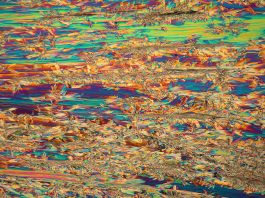By combining two-dimensional materials, researchers create a macroscopic quantum entangled state, labelled heavy fermion materials, that emulates rare earth compounds.
Physicists have designed a new ultra-thin two-layer material with quantum properties that would usually require rare earth compounds. This material, which doesn’t contain any rare earth metals, and is relatively easy to produce, could provide a new platform for quantum computing and help advance research into unconventional superconductivity and quantum criticality.
The scientists from Aalto University demonstrated that by utilising seemingly common materials, a radically new quantum state of matter can emerge. The discovery began with their efforts to create a quantum spin liquid which they could use to examine emergent quantum phenomena such as gauge theory. This requires the fabrication of a single layer of atomically thin tantalum disulphide. However, the process also creates islands that consist of two layers.
The Kondo effect
The research team then examined these islands and discovered that interactions between the two layers induced a phenomenon known as the Kondo effect. This resulted in a macroscopically entangled state of matter, producing a heavy-fermion system.
The Kondo effect is an interaction between magnetic impurities and electrons that results in the material’s electrical resistance to change with temperature. This causes the electrons to behave as though they have more mass, leading these compounds to be labelled heavy fermion materials. This phenomenon is a characteristic of materials containing rare earth elements.
The different uses of heavy fermion materials
These heavy fermion materials are crucial in several domains of cutting-edge physics, including an exploration into quantum materials. “Studying complex quantum materials is currently hindered by the properties of naturally occurring compounds,” explained Professor Peter Liljeroth. “Our goal is to produce artificial designer materials that can be readily tuned and controlled externally to expand the range of exotic phenomena that can be realised in the lab.”
For instance, heavy fermion materials could in fact act as topological superconductors, which would be useful for building qubits that are more robust to noise and perturbation from the environment, thus reducing error rates in quantum computers. “Creating this in real life would benefit enormously from having a heavy fermion material system that can be readily incorporated into electrical devices and tuned externally,” added Viliam Vaňo, a doctoral student in Liljeroth’s group and the paper’s lead author.
Although both layers in the new material are tantalum sulphide, there are subtle yet important differences in their properties. For example, one layer behaves like a metal, conducting electrons, while the other layer has a structural change that triggers electrons to be localised into a regular lattice. The combination of these two results in the appearance of heavy fermion physics, which neither layer exhibits on their own.
This recently discovered heavy fermion material also offers a powerful tool for probing quantum criticality. “The material can reach a quantum-critical point when it begins to move from one collective quantum state to another, for example, from a regular magnet towards an entangled heavy fermion material,’ explained Professor Jose Lado. “Between these states, the entire system is critical, reacting strongly to the slightest change, and providing an ideal platform to engineer even more exotic quantum matter.”
Professor Liljeroth expressed that “in the future, we will explore how the system reacts to the rotation of each sheet relative to the other and try to modify the coupling between the layers to tune the material towards quantum critical behaviour.”









